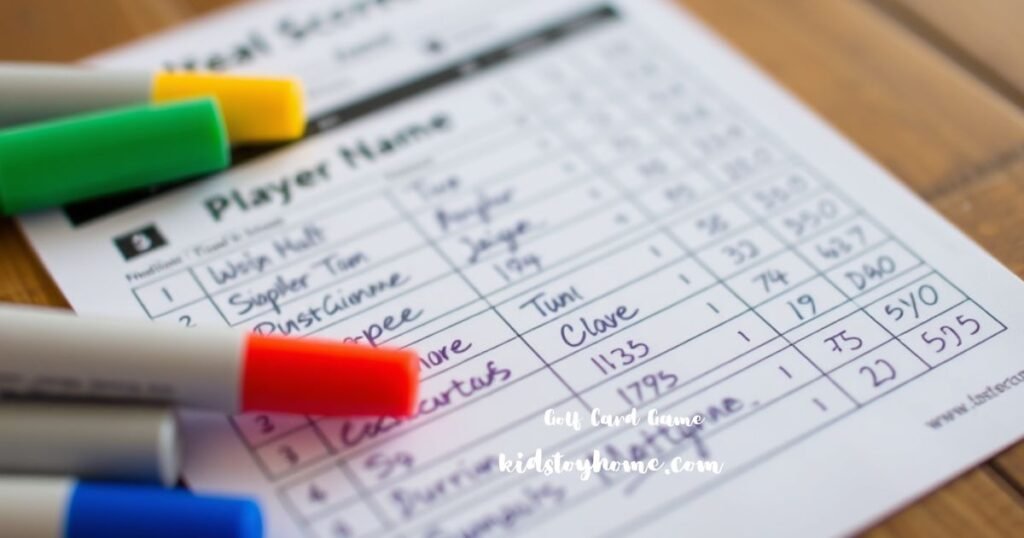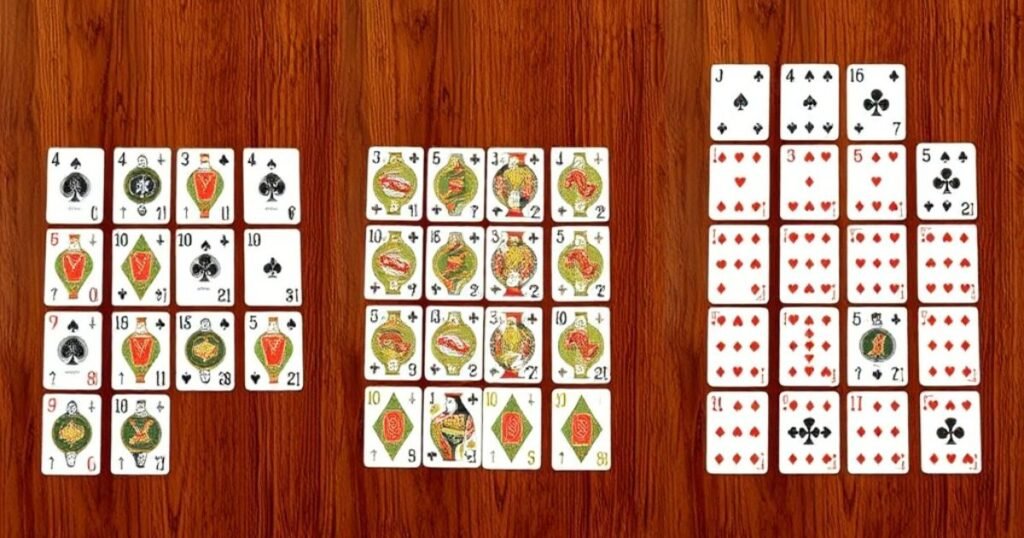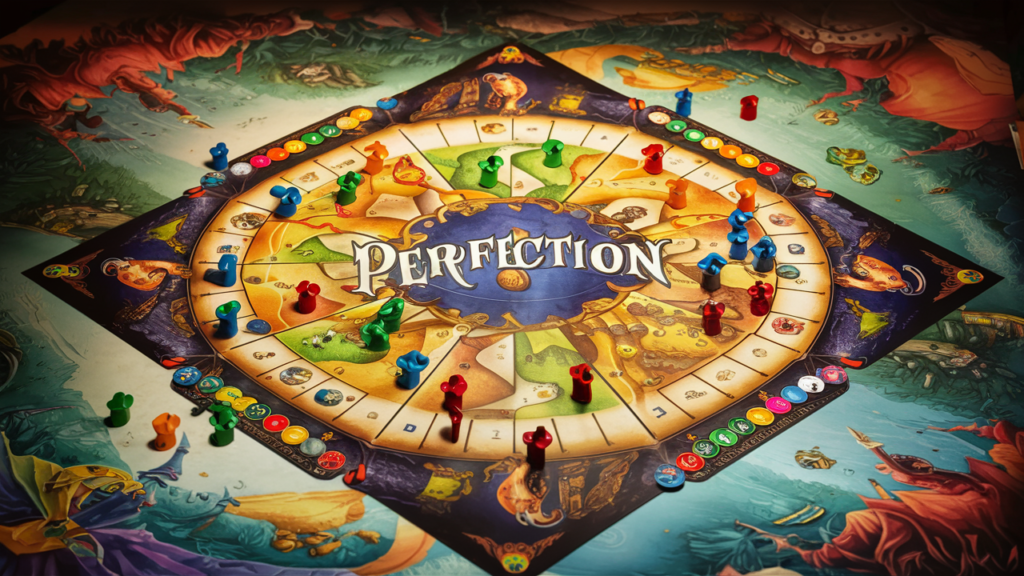The Golf Card Game is perfect for game nights with family or friends. Each player tries to get the lowest score by replacing high cards with low ones on their grid. In this guide, you’ll learn the basic rules, how to keep score, and smart strategies to win, whether you’re playing 4-card, 6-card, or 9-card golf.
What You Need to Play Golf Card

To play the Golf Card Game, you’ll need a standard deck of 52 playing cards. Depending on the variation you choose, you can also include jokers, adding an extra layer of strategy to the game. The use of jokers is optional, but when included, they often serve as wild cards or powerful scoring tools.
The Golf Card Game is best enjoyed with 2 to 6 players. With two players, the game becomes more of a head-to-head challenge, where each move can significantly impact the outcome. As you add more players, the game becomes increasingly unpredictable and social, with a mix of strategies coming into play. The number of players can also affect the game’s duration, with more players typically leading to longer rounds.
To keep track of scores throughout the game, you’ll need a scorecard and a pen. The scorecard is essential, as the goal is to have the lowest score by the end of the game. Each player’s score is recorded after every round, and the pen will ensure everyone’s scores are tracked accurately. This simple setup helps maintain the competitive spirit and enhances the game’s enjoyment.
The Objective of the Game
The goal of the Golf Card Game is to achieve the lowest score by the end of all rounds. Players strategically replace high-value cards with lower ones to minimize their total score.

Primary Goal
The primary goal of the Golf Card Game is straightforward: achieve the lowest score by the end of the game. Unlike many other card games that aim to accumulate points, here, you want to minimize your total. Each round involves making strategic decisions to replace high-value cards with lower-value ones, ultimately working to reduce your score.
Game Duration
The game typically spans 9 or 18 rounds, echoing the structure of a golf course. Each round is akin to a “hole” in golf, and just as in golf, the objective is to have the fewest strokes—or in this case, the lowest score—by the end. The duration of the game can be adjusted based on how many rounds you choose to play, allowing for quick games or longer, more strategic sessions.
Basic Setup
Players begin by shuffling the deck and dealing 6 or 9 cards to each player, which are arranged face-down in a grid. Each player then reveals two cards, setting the stage for strategic play.

Shuffling the Deck
Begin by thoroughly shuffling a standard 52-card deck to ensure that the cards are well-mixed. This helps to maintain fairness by randomizing the card order. After shuffling, the deck is ready to be dealt to the players.
Dealing the Cards

Each player is dealt a specific number of cards, typically 6 or 9, depending on the version of the game being played. Deal the cards face down to each player, ensuring that everyone has the same number. The cards are dealt in a way that each player has their own set of cards to work with, which they will use to form their grid.
Card Layout
Once players have their cards, they arrange them in a grid formation on the table. The grid is usually 2×3 or 3×3, creating a 6-card or 9-card setup. Players start with all their cards face down. To kick off the game, each player turns over two cards of their choice, revealing their values. This initial setup helps players begin strategizing based on the revealed cards while trying to keep their remaining cards hidden.
Gameplay Rules
To start the Golf Card Game, players take turns drawing a card from the deck or discard pile, aiming to replace high-value cards in their grid with lower-value ones. The game continues until a player decides to end the round, at which point all players reveal their cards, and scores are tallied.
Starting the Game
To begin, determine the first player. This can be done randomly, by drawing cards, or by any other method that ensures fairness. The chosen player starts the game by drawing a card from the deck or discard pile and proceeding with their turn. Each subsequent player then follows clockwise, continuing until the game concludes.
Scoring System
Card Values:
- Aces = 1 point
- Number Cards (2–10) = Face value
- Face Cards (J, Q, K) = 10 points each
- Jokers (optional) = 0 points or house rule
Calculating the Score
- Reveal the Cards: Players turn over all cards in the grid.
- Add Up Values: Calculate the total value of the revealed cards.
- Record the Score: Write down each player’s total on the scorecard.
- Reset the Grid: Shuffle and prepare for the next round.
Winning the Game
The game continues for the agreed number of rounds (usually 9 or 18). The player with the lowest total score at the end wins. Success depends on strategy, timing, and a little luck—making it one of the most engaging low score card games around.
Strategies for Winning
Focus on:
- Memorizing card positions
- Observing opponents’ moves
- Replacing high-value cards early
- Using wild cards (jokers) wisely
- Ending the round strategically
Common Variations
- Four-Card Golf: 2×2 grid, fast and easy.
- Six-Card Golf: Balanced gameplay with a 2×3 grid.
- Nine-Card Golf: More complexity and memory.
- Using Jokers: As wild cards or 0-point cards.
- House Rules: Modify scoring or layout for fun twists.
FAQs
Q: What happens in a tie?
A: Declare tied players winners or play a tiebreaker.
Q: Can you play with more than six players?
A: Yes, add more decks and play in teams or rotating rounds.
Q: Is there a way to speed up the game?
A: Use 4-card golf or reduce the number of rounds.
Q: How to settle disputes over rules?
A: Refer to house rules and come to a mutual decision.
Q: Best way to teach new players?
A: Play a practice round and give a quick rule summary.
Conclusion
The Golf Card Game is one of the most enjoyable and easy card games to play with family and friends. With simple rules, customizable house rules, and endless strategy variations, it’s the perfect game for casual play, competitive rounds, or even family game nights. Try out the printable scorecard, and explore new card game variations to keep things fresh!





